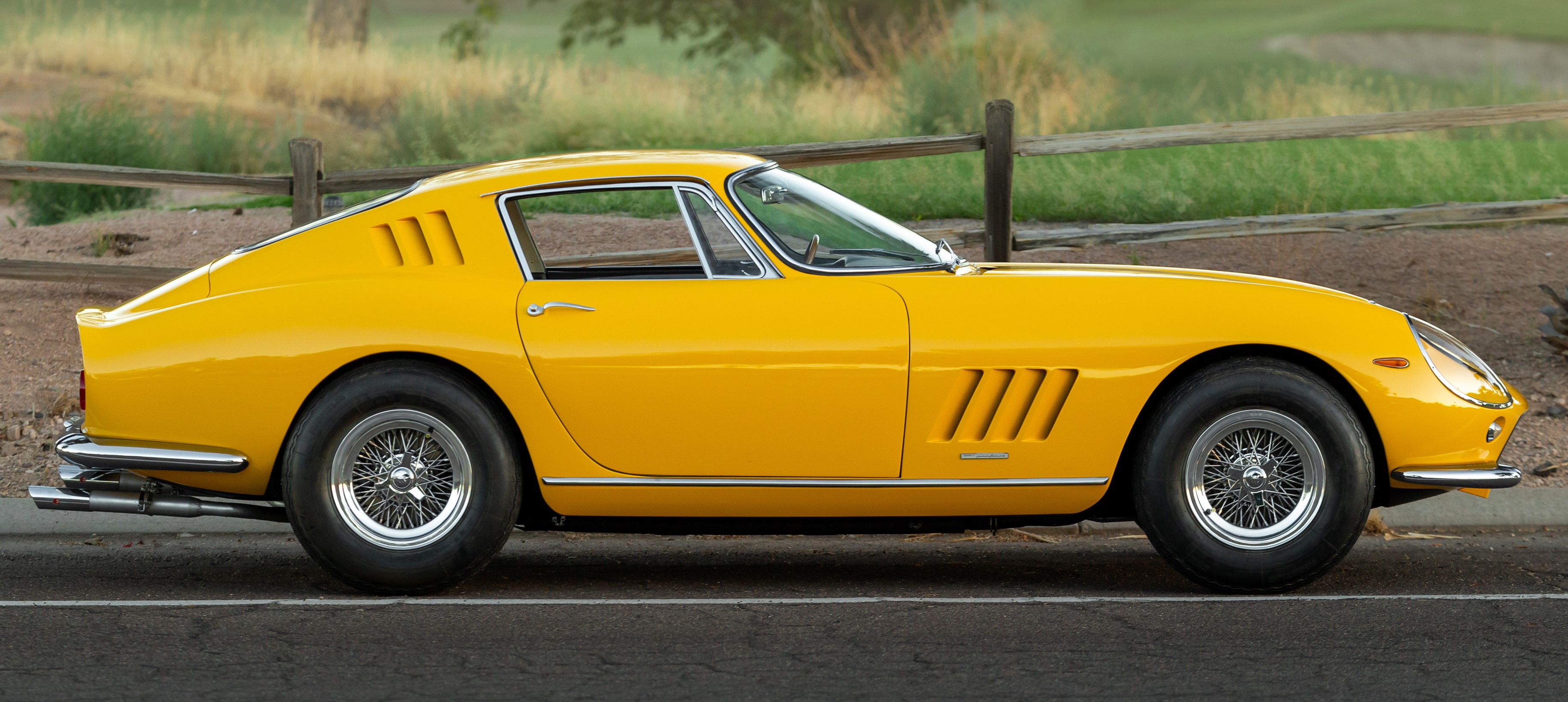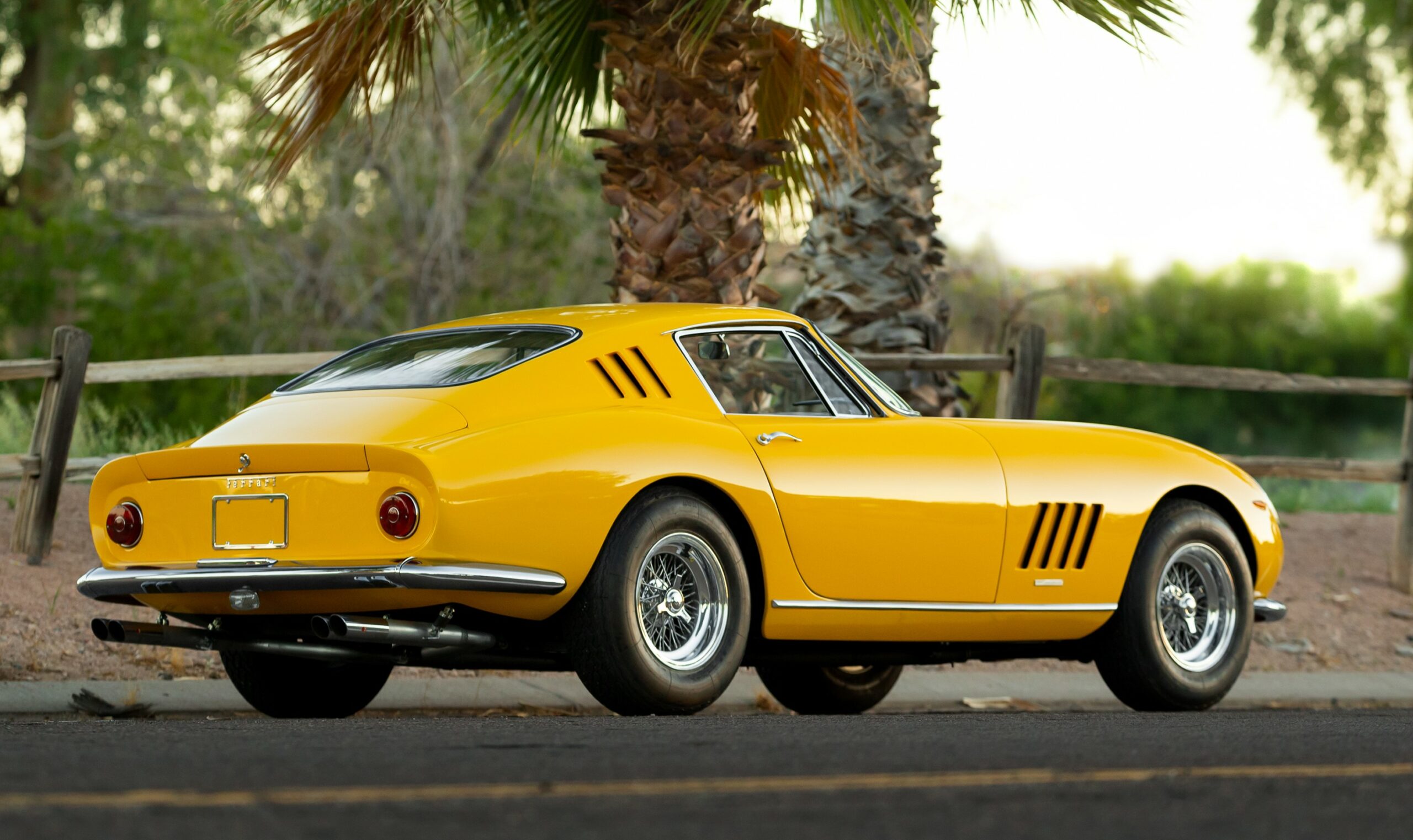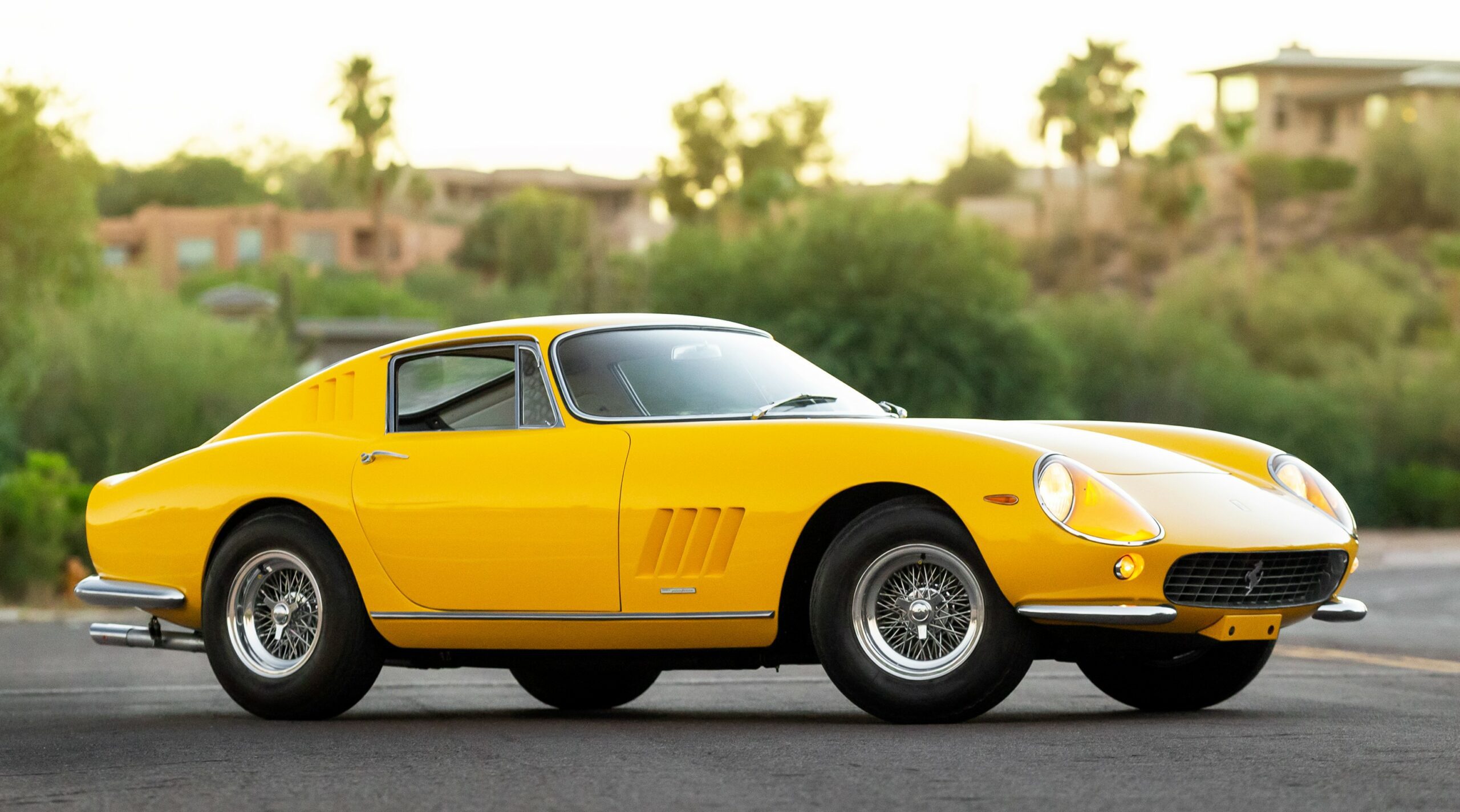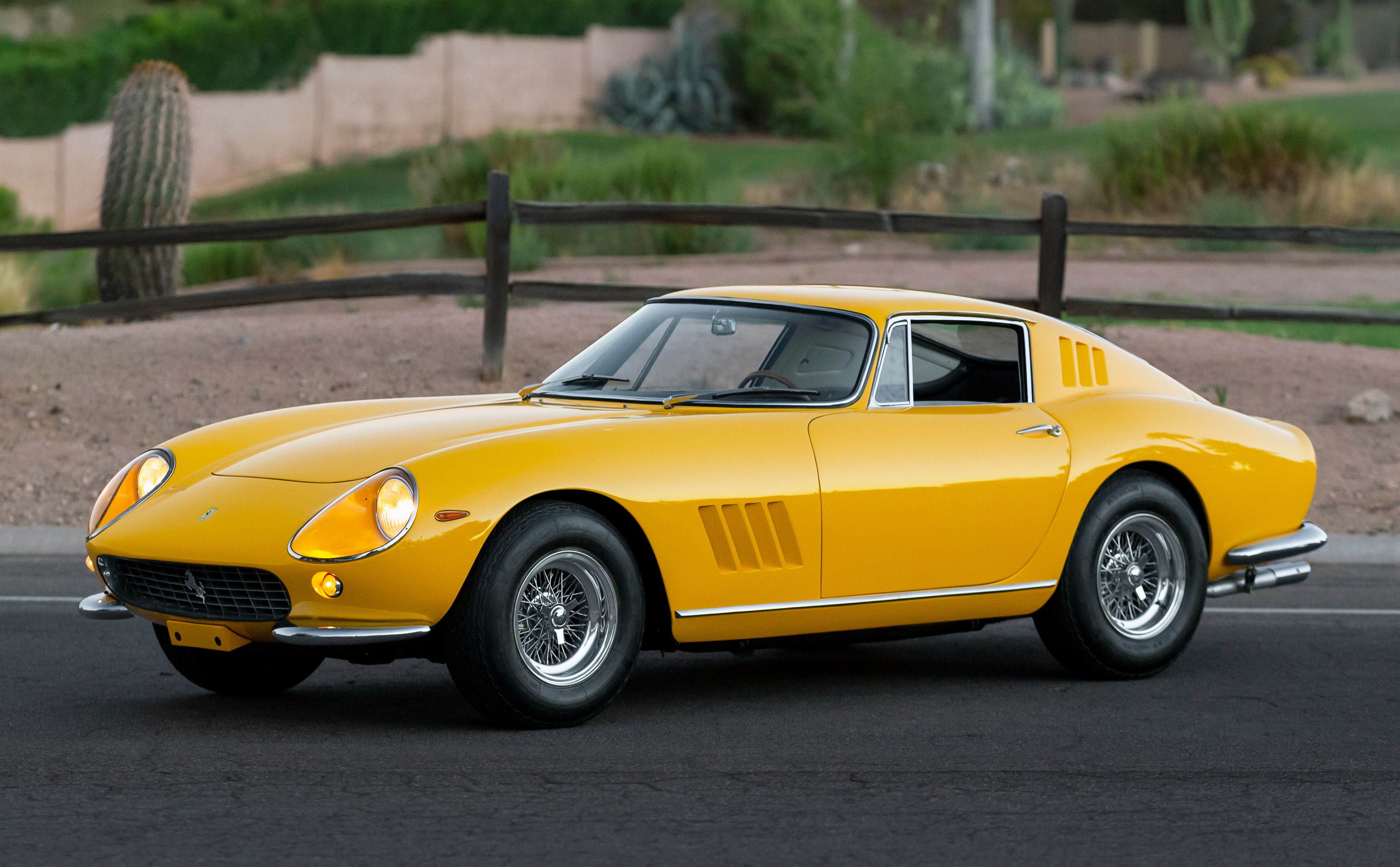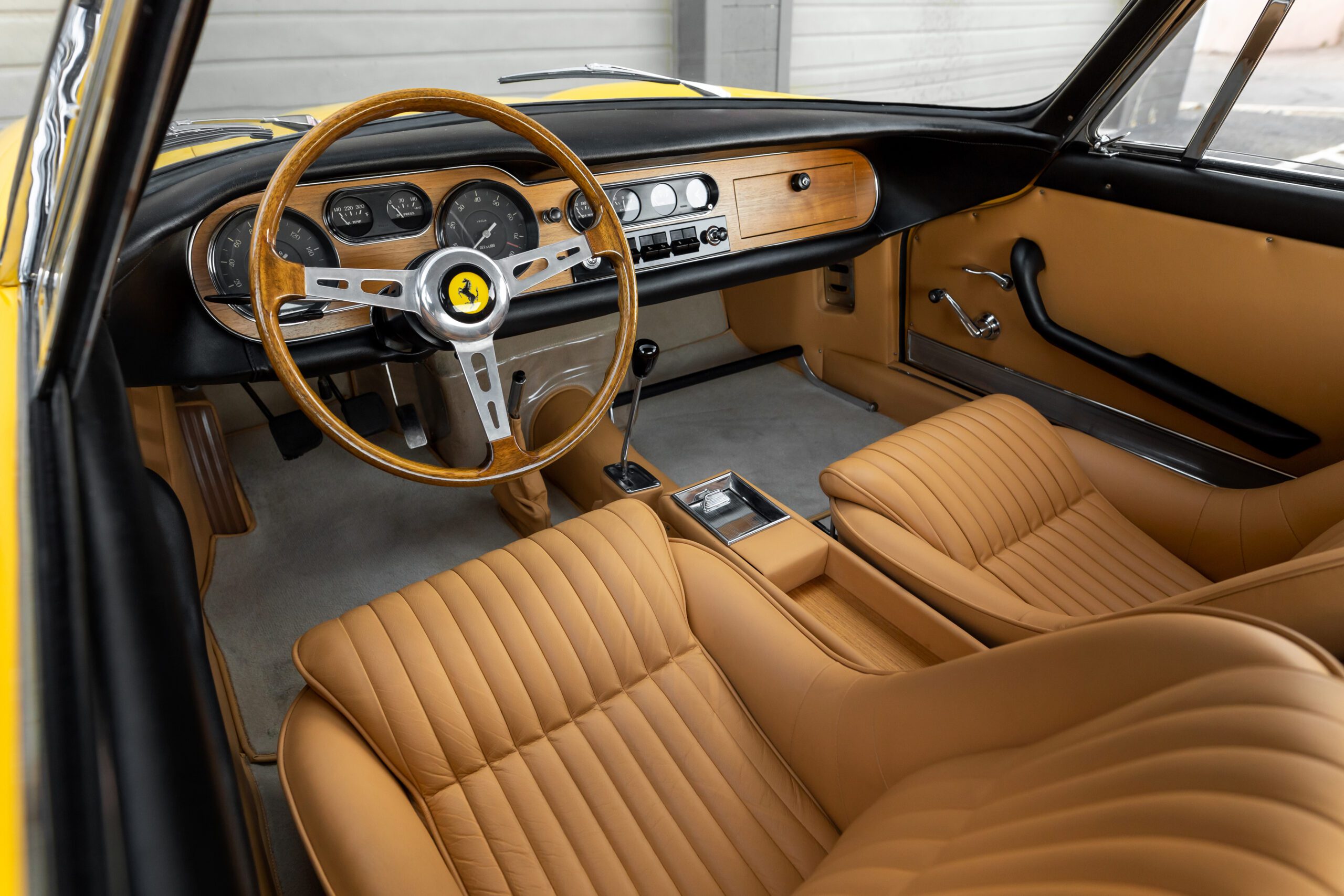Ferrari introduced the successor to the 250 GT platform at the Paris Salon in October 1964. Named the 275 GTB, the model featured Pininfarina-designed and Scaglietti-built coachwork that bore a striking resemblance to the celebrated 250 GTO. Powered by a 3.3-liter “Colombo” short-block V-12 engine, the 275 GTB was the first Ferrari road car to feature independent rear suspension and a five-speed transaxle, as well as the GTB (Grand Touring Berlinetta) nomenclature still in use today.
Within a year of its 1964 debut, a second series of the 275 GTB was introduced. This version had a longer nose that improved aerodynamic downforce at high speeds. By October 1966, Ferrari replaced the twin-cam engine with a four-cam version, establishing the prior model as a distinct entity. The first series (short-nose) was produced in a modest quantity of only 454 examples, of which slightly more than half were the early short-nose design.
Most of these early 275s had a standard three-carburetor manifold, but a small number of cars had an option of six carburetors. These six-carburetor (6C) short-nose examples are now considered the purest and most powerful iteration of the striking 275 GTB, and they are highly sought after by today’s enthusiasts, often found in exceptional collections around the world.

